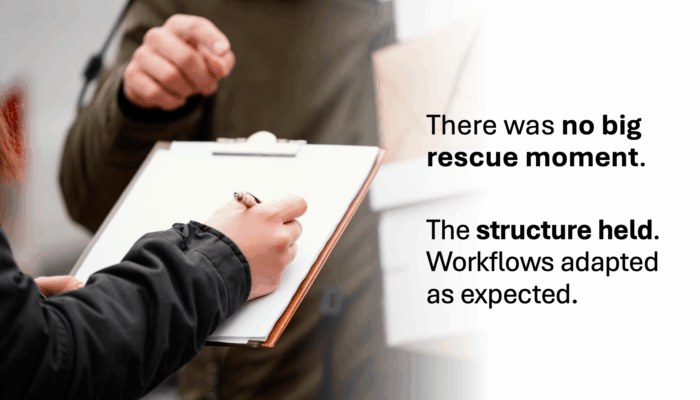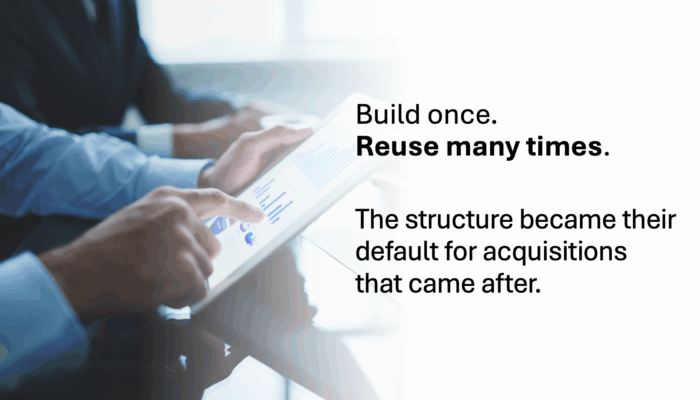How Fortive built a repeatable integration engine that delivered—even under global pressure.
Mergers and acquisitions (M&A) are a fast, strategic way for companies to grow, adding products, customers, and capabilities without starting from scratch. But the value isn’t realized in the deal. It’s in the transition that follows. And that is why Fortive decided to build an M&A execution engine for their integrations.
When Fortive acquired ASP from Johnson & Johnson for $2.7 billion in cash, the legal work was done.
The champagne had been popped.
But for IT and integration leaders, the real work was just beginning.
1,300 employees.
62 countries.
Tight TSA timelines.
And no room for disruption.
This is the story of what happened after the deal closed—and how structure, not heroics, kept the business running while everything underneath it moved.
The Business Had to Keep Running
From Day One, the mandate was clear: move everything—without breaking anything.
That meant standing up all-new core infrastructure. Devices, networks, cloud, applications, support.
It also meant shifting business functions and assets out of J&J into the new core without disrupting workflows.
And doing it in 62 countries.
Each with its own local vendors, logistics, compliance needs—and its own way things could go sideways.
This wasn’t about forcing a rigid plan.
It was about staying responsive—adapting to changing risks and continuing to move, while the business kept going.
Then COVID Hit
The carve-out was already underway when the COVID-19 lockdowns began.
Shipments stalled.
In-country work froze.
Border rules shifted weekly.
But nothing was allowed to slip.
- 1,994 laptops had to be scrubbed and redeployed
- 23 warehouse networks had to be built out
- 30 cloud workspaces had to be spun up
- Global business transitions had to stay on track
That’s when the execution engine got stress-tested.
And everyone found out if it could take the hit—or not.
No Heroics. Just Structure That Worked
There wasn’t a big rescue moment.
No one was going to ride in and save the day—not in the middle of a global pandemic.
No one had to.
What worked was an adaptive structure—built in from the beginning:
- Each country had a clear mobilization plan.
- All stakeholders stayed engaged.
- Every risk had an owner and a contingency.
- Every handoff and communication was designed to scale.
That’s how a 62-country carve-out stayed on track during a global crisis.
Not with heroics. With structure that did its job—so that ASP’s life-saving operations stayed available to the world.
Built Once. Reused Again.
This isn’t just a story about one multi-billion dollar acquisition effort.
It is about the structure that proved itself—and became their integration default for acquisitions that came after.
- Reusable playbooks.
- Proven cloud architecture.
- Consistent engagement and transparency.
Fortive used that same structure for their next integration—Censis.
And the one after that. And…
When a system holds up under pressure, it earns a spot in the toolbox.
What Happens Before Day One…
By the time Day One arrives, it’s already late in the game to start thinking about your integration engine.
You’ve either got an adaptive structure that can deliver,
or you’re trying to get through it by cutting corners, paying overtime, and taking on a pile of needless risk.
Fortive didn’t wait.
They put the structure in place early—at the start of the TSA clock.
And it held up.
The lesson isn’t just that integrations are complex.
It’s that the execution engine behind your integration is how the deal value gets delivered.
Want to See How It Worked?
Download the full case study PDF
A detailed breakdown of Fortive’s ASP integration—key success factors, structure, outcomes.
Talk to us about your next integration
We’ve helped carve-outs succeed under global pressure. Together let’s talk about how to get your next one right.











One thought on “The Deal Closed. Now We Get To Work!”
Comments are closed.